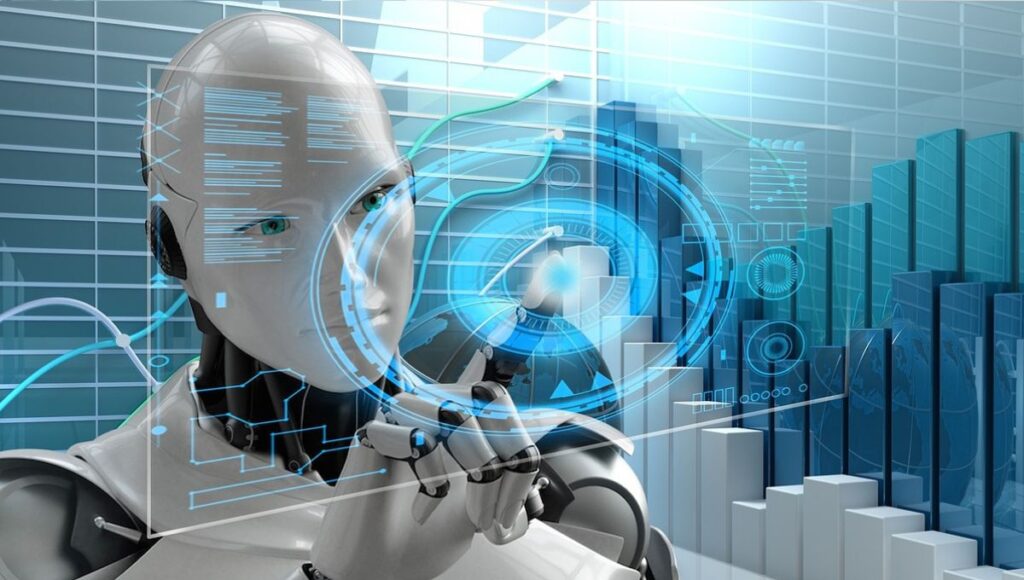With both gains and limitations, artificial intelligence (AI) has quickly emerged as a transformational force in education. As technology becomes more integrated into classrooms, it’s important to understand the potential effects it may have on the learning environment. In this essay, we explore the issues around the “Negative Effects of AI in Education.”
Explore the darker side of AI as you enter a world where technological progress and education collide. Explore the complex realm of how AI affects education and learn about its possible hazards and disadvantages. This investigation delves deeper beyond the surface, offering an honest viewpoint on the less-talked-about facets of AI integration in education, from data security issues to the possible loss of human connection.
Come along as we explore the ways that AI is affecting education and learn about the potential drawbacks that might arise from its use. This article presents an overview of the many dangers and concerns related to the junction of Negative Effects of AI in Education from ethical issues to the replacement of jobs for educators. Continue reading to learn more about the possible disadvantages that should be taken into account in our dynamic learning environment.
Disadvantages of Artificial Intelligence in Education

1. Loss of Human Connection
Although integrating AI into education may be efficient, there’s a chance that it could unintentionally result in less real human interaction. Teachers and students may engage with computers more often than with one another, which might lessen the relational and empathic components of learning.
2. Data Privacy and Security
The enormous volumes of data produced in educational environments give rise to worries about the security and privacy of this data. To keep educational systems intact, it is essential to have strong security measures in place to prevent unauthorized access or security breaches involving student data.
3. Bias and Fairness
When taught biased data, AI systems have the potential to reinforce preexisting prejudices. Students may be treated unfairly as a consequence, which would be disproportionate. Upholding the ideals of justice and equality in education requires acknowledging and eliminating prejudice.
4. Overdependence on AI
While artificial intelligence (AI) has the potential to improve education in certain areas, excessive dependence on technology may prevent students from developing their capacity for critical thought and problem-solving. Fostering a well-rounded educational experience requires striking a balance between the integration of AI and conventional teaching approaches.
5. Job Displacement for Educators
Concerns regarding job displacement for educators may arise if AI automates certain educational duties. It is important to maintain an equilibrium between technology and human-led teaching to maintain the unique attributes that human educators provide to the educational setting.
6. Lack of Emotional Intelligence
Teachers have sophisticated knowledge of human emotions that AI does not. This shortcoming may have an effect on pupils’ development of emotional intelligence, which is an essential component of their overall growth.
7. Limited Customization
Even though AI offers individualized learning, there may be restrictions on how each student’s demands may be met in terms of education. For personalized learning to be successful, the correct balance between AI-driven customization and human comprehension must be struck.
8. Accessibility and Equity
Inequalities in education may become worse if some people have less access to AI-driven learning resources. Accessibility and equality issues brought about by a widening digital divide may compromise the goals of an inclusive educational system. To guarantee that everyone can benefit from artificial intelligence in education, these issues must be resolved.
9. Tech Glitches and Reliability
The possibility of technological issues that might interfere with learning is increased when artificial intelligence is used in the classroom. Accessing instructional materials might be challenging during unanticipated downtime due to network issues or system failures. The dependability of AI systems becomes essential because technological malfunctions may negatively affect teachers and students, undermining the efficacy of education as a whole.
10. Impersonal Assessment and Feedback
While effective, AI-driven assessment methods may provide assessments that lack human touch. The contextual knowledge and nuanced understanding that human instructors contribute to exams may be absent from automated grading systems. Since individualized feedback is so important to students’ learning, this impersonality may hurt their motivation and interest. Effective learning environments require finding a balance between the effectiveness of AI evaluations and the customized touch of human input.
11. Distraction and Multitasking
The use of AI in the classroom may unintentionally encourage multitasking and distraction among students. The pull of technology, together with the possibility of engaging in a wide range of online activities, might cause pupils to lose focus on the main learning goals. Keeping an atmosphere that is favorable to learning while minimizing distractions requires striking a balance between the advantages of technology and these precautions.
12. Ethical Dilemmas
As AI permeates schooling more deeply, moral questions surface. Careful thought must be given to matters like correcting biases, guaranteeing justice in AI-driven judgments, and using student data responsibly. If educators and legislators are to uphold the values of justice, transparency, and appropriate AI use in learning environments, they must resolve these moral conundrums.
13. Teacher Training and AI Literacy
Teachers must have the requisite training and technological literacy to successfully integrate AI into the classroom. Teachers who are not adept at using AI technologies may not be able to reach their full potential. Sufficient programs for training teachers and continuous assistance are necessary to provide them with the abilities required to handle the changing AI environment in education.
14. Expensive Implementation Costs
The expenditures associated with using AI in educational institutions might be high. Finances may be a big obstacle when it comes to educating teachers, maintaining infrastructure, and procuring state-of-the-art technology. To guarantee sustainable and economic integration, educational institutions must weigh the possible advantages of AI against related expenses.
15. Loss of Human-Led Classroom Dynamics
The dynamics of the classroom may change as a result of the growing dependence on AI, which might lessen the need for human-led instruction. There may be a tradeoff in the interpersonal relationships, spontaneity, and flexibility that human instructors offer to the classroom. Maintaining a comprehensive educational experience requires finding a balance between the effectiveness of AI-driven processes and the unique characteristics of human-led dynamics.
Challenges and Risks of AI Integration in Education

1. Ethical Issues
Many ethical questions arise when artificial intelligence (AI) is used in the classroom. Important concerns include data privacy, informed consent, and appropriate use of student information. The use of AI-driven technologies may create ethical conundrums, underscoring the need for precise rules, moral frameworks, and ongoing oversight to guarantee the moral application of AI in educational contexts.
2. Pedagogical Issues:
The use of AI in education raises pedagogical issues as it may need modifications to conventional teaching and learning strategies. It takes thought to strike a balance between pedagogically sound practices and AI-driven technologies. To ensure the continued effectiveness and quality of education, artificial intelligence must be used to enhance good teaching methods rather than replace them.
3. Social Issues:
The use of AI in education has brought up societal issues outside of the classroom. The main concerns are those of equality, access, and the possible escalation of already-existing imbalances. A digital gap might result from socioeconomic issues affecting how easily accessible AI-driven educational resources are. It is essential to tackle these societal challenges to guarantee that the advantages of integrating AI are dispersed fairly across varied societies.
Negative Effects of AI in Education

1. Foster a Lack of Creativity and Innovation
Integration of AI in education might unintentionally inhibit originality and creativity. Standardized AI-driven methods may restrict students’ ability to think critically, solve issues creatively, and consider many viewpoints, which would impede the development of critical thinking and other future-ready abilities.
2. Reinforce Existing Biases
The use of AI algorithms may unintentionally reinforce biases in the training data. This perpetuates preexisting prejudices in society, which may lead to kids being treated unfairly and given fewer chances. To prevent AI from escalating social inequalities, it is essential to acknowledge and address these prejudices.
3. Replace Human Interaction
An over-reliance on AI may erode the rich human relationships that are essential to education. Students’ overall development may be impacted if face-to-face contacts with classmates and instructors are substituted, perhaps leading to a decline in social and emotional development.
4. Lead to Over-Reliance on Technology
An excessive reliance on AI-driven technologies may encourage over-reliance on technology. As more students rely on technology for answers, they may become less proficient in conventional problem-solving and critical thinking techniques, which might jeopardize their general cognitive development.
5. Result in Standardization of Learning
AI’s uniform approach to teaching might result in a learning environment that is not tailored to each student. Education that is adapted to each student’s unique learning style may suffer as a result, which might compromise the success of individualized learning and impede individuals’ varied demands.
6. Lack of Empathy and Emotional Intelligence
Human educators possess a depth and refinement in their understanding of human emotions that AI is unable to match. This shortcoming may prevent adolescents from developing empathy and emotional intelligence—two qualities that are essential to their social and mental health.
7. May Be Vulnerable to Hacking and Cybersecurity Risks
Education establishments are more vulnerable to hacking and cybersecurity breaches as they depend more and more on AI-driven technologies. Maintaining strong cybersecurity protocols and protecting sensitive student data is essential for preserving the integrity of the educational system.
8. Job Losses: AI May Disrupt the Labor Market for Educators
AI’s ability to automate certain educational functions may result in employment losses in the education industry. Although artificial intelligence (AI) has the potential to expedite certain procedures, there are worries that it may eventually replace human instructors. This might influence the job market and create issues about the role of educators in the digital era.
9. Privacy
Using artificial intelligence (AI) in education poses serious privacy problems. AI systems gather a tremendous quantity of student data, requiring strict protocols to protect the confidentiality and privacy of this data. Ensuring the safety of educational institutions against possible data breaches and unauthorized access is crucial for preserving their credibility and integrity.
10. Cost and Accessibility
Although artificial intelligence (AI) offers creative ideas for education, there may be financial difficulties. AI use in education could require large financial outlays, which might lead to accessibility problems. To stop the widening of educational gaps from becoming worse, it is crucial to find a balance between affordability and accessibility.
11. Dependence on Technology
The growing integration of AI in educational institutions raises concerns about dependency on technology. Overusing conventional teaching techniques may weaken students’ critical thinking and problem-solving abilities learned through human-led education.
12. Inequitable Access
The use of AI-powered learning resources might unintentionally lead to access gaps. Access to these technologies may be limited for students in underprivileged or isolated locations, resulting in an unequal distribution of educational resources. It is essential to eliminate these accessibility gaps to provide equitable chances for every student.
13. Lack of Personalized Human Touch
Although AI can tailor learning experiences, it cannot have the human touch and empathy needed for successful teaching. Fostering a comprehensive and stimulating learning environment requires finding a balance between AI-driven customization and the indispensable benefits of human connection.
14. Ethical Concerns
The responsible use of student data, openness in algorithmic decision-making, and equal treatment are only a few of the ethical issues of AI in education. Careful thought and the creation of ethical frameworks to guide the correct use of AI in educational settings are necessary to navigate these ethical issues.
15. Erosion of Job Roles

The use of AI in education may undermine conventional employment roles. There are worries that automation may lead to job displacement among educators in particular. To keep things harmonious in the educational environment, it is essential to strike a balance between the advantages of AI and the retention of human-led jobs.
16. Personalized Learning
While tailored learning experiences are one of the promises made by AI, real customization requires precise calibration. Prioritizing the customization of education to meet the unique learning styles and demands of each student is necessary to guarantee that AI-driven personalization improves rather than degrades educational effectiveness.
17. Ease of Administration
AI in education simplifies activities and procedures, providing administrative benefits. However, placing too much focus on administrative simplicity might unintentionally detract from the depth of learning opportunities. It’s crucial to strike a balance between maintaining educational quality and administrative effectiveness.
18. Beyond the Boundaries
AI has the power to break down barriers to education that have traditionally existed, allowing for distant and international learning. However, to avoid making already existing inequities worse, it is imperative to make sure that the advantages of AI transcend geographical and social borders.
19. Support for Special Educational Needs
AI has the potential to help kids with special schooling requirements by offering them individualized assistance. However, creating an educational environment that is helpful and open to everyone depends on making sure that these technologies are inclusive and meet the various requirements of students with disabilities.
Frequently Asked Questions
What are the primary privacy concerns related to AI in education?
Privacy concerns in AI education involve safeguarding student data from unauthorized access and breaches and ensuring secure data handling practices.
How does AI integration impact job roles in the education sector?
AI integration may lead to job displacement for educators as certain tasks become automated, raising questions about the future role of human educators.
Can AI-driven personalized learning truly replace the human touch in education?
While AI offers personalized learning experiences, it may lack the empathetic human touch essential for effective education, necessitating a balanced approach.
What ethical considerations should be addressed in AI education implementation?
Ethical concerns include responsible use of student data, transparency in algorithms, and equitable treatment, requiring careful ethical frameworks for AI implementation.
How can the negative effects of AI in education be mitigated?
Addressing negative effects involves a balanced approach, emphasizing ethics, accessibility, and preserving human-centric qualities to align AI with effective education principles.
Conclusion-Negative Effects of AI in Education
The environment of artificial intelligence (AI) integration in education is changing yet complex, with both possibilities and problems. The exploration of the Negative Effects of AI in Education reveals potential pitfalls ranging from privacy concerns to job displacement for educators. While AI holds up the promise of innovation and efficiency, preserving human-led features in education—like creativity, empathy, and tailored interactions—necessitates a careful balance. Achieving this balance is essential to creating a learning environment that makes use of AI’s advantages without sacrificing the core ideas of good teaching.
Making the shift from old-school paradigms to an AI-infused future in education requires careful planning. Educational stakeholders must actively address concerns about ethics, accessibility, and the preservation of human-centric traits. A collaborative effort is necessary to navigate the difficulties raised and ensure responsible AI integration in education. Minimizing potential drawbacks and aligning technical innovation with the fundamentals of efficient and fair instruction requires a proactive approach. Balancing innovation and ethical concerns creates the possibility of a future where artificial intelligence (AI) actively enhances education rather than interfering with it.

Hey, I’m Akhtar Rasool a blogger from Lahore Pakistan who’s all about the marketing game. Reading and writing fuel my creative side, and I’ve found success in the blogosphere. Let’s connect through words and explore the exciting world where content meets strategy! 🌟








